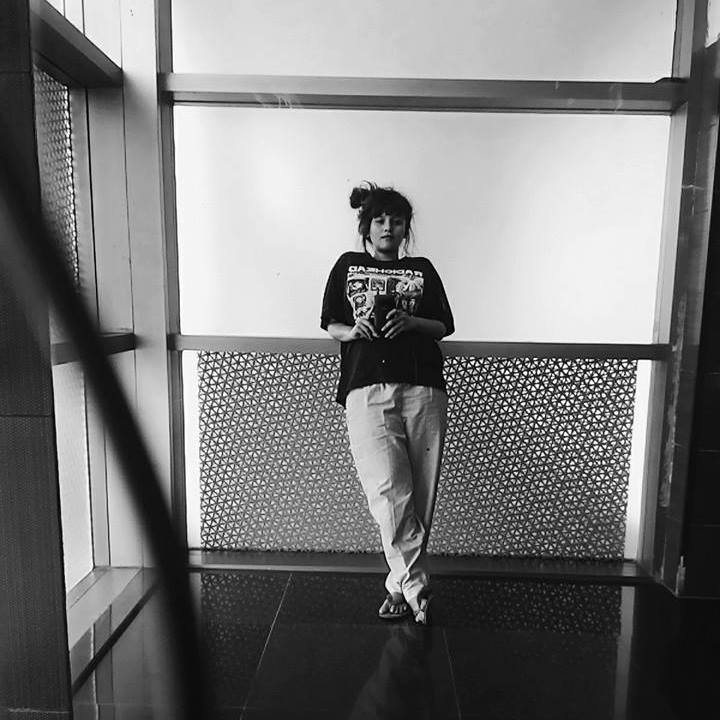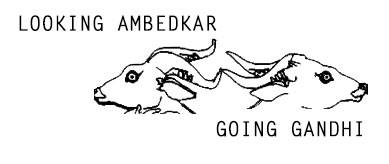Shiv Shankar Das

The history of Buddhism in India was brought back in its glory mainly by the colonial period’s excavations, when many statues and other Buddhist symbols were found by archeologists. Besides, the Bhikkhus who came to India, chiefly Bhikkhu Dhammapal, Bodhanand and Pragyanand, from Sri Lanka during the last and the first quarter of 20th and 21st century, respectively, contributed immensely to the revival of Buddhist history and culture in the northern part of the country. The Buddhists in Lucknow quickly name these Bhikkhus in the history of Buddha-Dhamma in Lucknow. Among Barau Buddhists, Bhikkhu Kripasaran is very much credited with spreading Buddha-Dhamma here. The role of Dr. Ambedkar is duly credited by both: Ambedkar-Buddhists as well as Barau-Buddhists.
Ancient History of Lucknow in Buddhist Folklore

Gautam Buddha spent 24 monsoons, a major part of his life, in what is now Uttar Pradesh. People, generally, know that Buddha had spent some time of his life in Shravasti, Sarnath and Kushinagar etc., but the Buddhists in Lucknow strongly believe and argue that he might have visited many more places as well and modern Lucknow might be one among those. Modern Lucknow, according to the hindu version, is said to be established by Lakshman, a mythical character in the epic, Ramayana. But there is another version of the origin of this name which says that Lucknow was earlier known as Nucklow (नखलऊ) (still used by aged people) and the history behind this is that the nails (नख) of Buddha were brought here and placed in a stupa. Thus placing of Buddha’s nails (नख) at this place gave it the name which later on changed from Nucklow (नखलऊ) to Lucknow (लखनऊ). Another story talks about Buddheshwar Chowraha where there once was a Buddhist shrine which was captured by hindus and later converted into a temple for Lord Shiva. There is one more folk legend among Buddhists in Lucknow about a Baudh Vihara called Amavasi Baudh Vihar where Buddhists used to gather on the day of the new moon (Amavasa). The contemporary airport named as ‘Amousi airport’ stands there now and the name Amousi came from that Vihara. Thus, there is a strong belief among Buddhists that the history of Lucknow boasts of a very rich Buddhist cultural heritage and hence invites sincere attention of archeologists and excavations.
Demography of the Buddhists in Lucknow
According to 1951 census, the number of Buddhists in Lucknow district was 73, which reached 216, 322, 347, 2816, 4327 in 1961, 1971, 1981, 1991 and 2001 censuses respectively. The 73 Buddhists in the 1951 census, before Dr. Ambedkar’s full-fledged campaign for Buddhism for ex-untouchables, were mainly the Bengali Barua Buddhist families who came here from Chittagong after the partition of Bengal in 1905. These Bengali Buddhists worked for the Britishers as their servants and cooks and also looked after their horses and stables. Now, the number of these Buddhists has reached 300-400 people.
 The biggest jump in the numbers of Buddhist population is observed in the census of 1991 and 2001. As per my observation, one of the most viable reasons seems to be the advent of the plethora of literature on Ambedkar, Asoka and Buddha written largely by government employees after 1990 and their active involvement in the dhamma activities. The census office in India for the first time in its history also revealed that almost 70% of the Buddhist population in Uttar Pradesh is from the scheduled castes background and 30% from others. It signifies that in ‘others’ there might be Buddhists from non-SCs. The case is further strengthened by some of my interviews and observations in Lucknow. Upon enquiry, many Buddhist activists and all the interviewees also accepted that backward castes are also getting inclined towards Buddhism. As a whole, Buddhists in Lucknow are mainly from diverse social backgrounds (Barau Bengalis, Scheduled Castes and Backward Castes).
The biggest jump in the numbers of Buddhist population is observed in the census of 1991 and 2001. As per my observation, one of the most viable reasons seems to be the advent of the plethora of literature on Ambedkar, Asoka and Buddha written largely by government employees after 1990 and their active involvement in the dhamma activities. The census office in India for the first time in its history also revealed that almost 70% of the Buddhist population in Uttar Pradesh is from the scheduled castes background and 30% from others. It signifies that in ‘others’ there might be Buddhists from non-SCs. The case is further strengthened by some of my interviews and observations in Lucknow. Upon enquiry, many Buddhist activists and all the interviewees also accepted that backward castes are also getting inclined towards Buddhism. As a whole, Buddhists in Lucknow are mainly from diverse social backgrounds (Barau Bengalis, Scheduled Castes and Backward Castes).
Visual 20th & 21st Century Architecture and their Related Figures
The foundation of twentieth century Buddhism in Lucknow was laid by the Bengali Barua Buddhists much before Dr. Ambedkar took deeksha. The Bodhisattva Vihar at Latus Road, Lucknow was built by Bhikkhu Kripasaran Mahasthavir (1865-1926), affiliated to the Bengal Buddhist Association, in 1907. By keeping intimate relationship with the then Education Secretary in the Government of India, Harcourt Butler (1869-1938), who was later on appointed as Governor of Agra and Oudh, Kripasaran could manage to acquire the land where the existing Vihara is situated.
The second oldest Buddha Vihar at Risaldar Park, Lucknow, affilited to Mahabodhi Society of India, was built by Bhikkhu Bodhanand, as he came back from Sri Lanka to revive Buddhism in India and became closely associated with Bhikkhu Kripasaran & Bodhisattva Vihar. His disciple, Bhikkhu Pragyanand (1928-), who is currently the head of the Vihara is one of the Bhikkhus (led by Bhikkhu Chandramani) who gave deeksha to Dr. Babasaheb Ambedkar in 1956. This Vihara is an important meeting place for Dalit, Bahujan and Buddhist activities. Dr. Ambedkar also stayed here twice, once in 1932 and later in 1948.
A park called as Gautam Buddha Park which is situated near Rumi gate is also one of the significant developments as far as Buddhism in Lucknow is concerned. This park is built in around 10 acres by LDA in the year 1980 with a huge Buddha statue in sitting position. This is one of the biggest Buddha statues we come across in Lucknow. Many people assemble here on various occasions which are significant in Buddhist traditions and calendars.

In the last decade of 20th century and first decade of 21st century, the Bahujan Samaj Party, on coming into power in UP, constructed roads, chowks, hostels, parks etc. in the name of Buddha. One of the most significant projects is the construction of Baudh Vihar Shanti Upvan on VIP road which is 1.2 km long and is spread in 32.5 acres consisting of a 18 feet tall four-sided marble statue of Gautam Buddha at the main entrance. On both sides of the statues there are two fountains (each 28 feet tall and 24 feet diameter). Almost 10-12 Bhikkhus reside in this Vihara and there is a dining hall which can accommodate approx. 60 people. This premises also includes a library and a meditation hall and dormitories for Bhikkhus and guest scholars.
 Another important place which attracts Buddhists in Lucknow is Parivartan Chowk (‘Change Square’) where a four-sided Buddha statue in sitting position is installed. This statue is placed under a tower made out of black granite and above this tower a white marble sphere is placed. This tower is surrounded by the statues of Dr. Ambedkar, Shahuji Maharaj, Mahatma Jyotirao Phule and Narayan guru at four corners. The place seems to be very important historically as it is surrounded by Lakshman park, Shyama Prasad Mukherjee park, Subhash park, Tagore park and Begam Hazarat Mahal park, etc. As this modern structure symbolizes ‘change’ various rallies, processions and demonstrations for social justice and Buddhist activities usually start from here.
Another important place which attracts Buddhists in Lucknow is Parivartan Chowk (‘Change Square’) where a four-sided Buddha statue in sitting position is installed. This statue is placed under a tower made out of black granite and above this tower a white marble sphere is placed. This tower is surrounded by the statues of Dr. Ambedkar, Shahuji Maharaj, Mahatma Jyotirao Phule and Narayan guru at four corners. The place seems to be very important historically as it is surrounded by Lakshman park, Shyama Prasad Mukherjee park, Subhash park, Tagore park and Begam Hazarat Mahal park, etc. As this modern structure symbolizes ‘change’ various rallies, processions and demonstrations for social justice and Buddhist activities usually start from here.
Besides the above Buddhist monuments, in the contemporary era, as the number of Buddhists are increasing, many Viharas at individual or community levels are also being constructed at various places in Lucknow such as Mahendra Baudh Vihara at LDA colony on Kanpur road, built by Mr. D. P. Varun (IAS Retd.), Mahamaya Buddh Vihara at Teli bagh by Kallu Baudh etc.
To conclude, my submission is that the Buddhism in Lucknow has deep historical and cultural connections which are found in a lot of local folklore. The socio-cultural composition of Buddhists in Lucknow consists of Bengali Barua Buddhists as well as SCs and OBCs. In modern times, many Bhikkhus, and Baudh Viharas, parks, chowks etc. are important catalysts in the spread of Buddhism.
Shiv Shankar Das is a PhD Research Fellow at the Centre for Political Studies, Jawaharlal Nehru University.
Pictures courtesy: Bhanu Pratap Singh.









